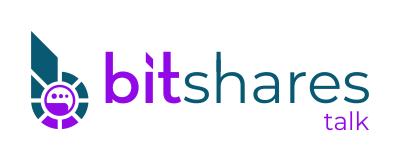16
Stakeholder Proposals / Proposal Idea: Privatisation Beyond bitAssets - ALL classes of instrument
« on: June 05, 2015, 02:38:43 am »
We are all constantly debating over the best form for bitAssets to take. We are all trying to have our voice heard as to what we think is the best structure. So why not let us put in place whatever structure we like?
There are people in this community that have skills to design and develop all sorts of block-chain based equivalents to CFDs, futures, options, ETFs, prediction markets etc. So instead of trying to funnel this through a resource constrained core development team, with bytemaster acting as the queue master, could we do something like the following:
- Allow Designers to design and develop code templates for different classes of instrument, that operate to different rules,
- Promoters can use these templates to specify their particular parameters, pay a fee to have it accepted into the core bitShares code, and pay a fee to the Designer
Privatised bitAssets will allow anybody to take the bitAsset template and reset the parameters how they like. The above approach extends this to any class or form we can imagine, so that we can build new markets.
I personally believe that we have all been somewhat obsessed by trying to find the perfect bitAsset structure (and especially currency structure) that will suit everybody's needs and wants. But such a structure does not exist. Instead we need to realise that there are many possible structures, just as there are in the traditional financial environment, that each meet different needs and purposes. What I'm looking for here is a way to make that happen more effectively and faster, rather than the current process of trying to force a million pigs through the poor old python (or choosing one pig from the million). I'm not a coder/developer, so others may have better ideas on how such a goal could be implemented.
Not sure how clear this is, hopefully you get the gist.
There are people in this community that have skills to design and develop all sorts of block-chain based equivalents to CFDs, futures, options, ETFs, prediction markets etc. So instead of trying to funnel this through a resource constrained core development team, with bytemaster acting as the queue master, could we do something like the following:
- Allow Designers to design and develop code templates for different classes of instrument, that operate to different rules,
- Promoters can use these templates to specify their particular parameters, pay a fee to have it accepted into the core bitShares code, and pay a fee to the Designer
Privatised bitAssets will allow anybody to take the bitAsset template and reset the parameters how they like. The above approach extends this to any class or form we can imagine, so that we can build new markets.
I personally believe that we have all been somewhat obsessed by trying to find the perfect bitAsset structure (and especially currency structure) that will suit everybody's needs and wants. But such a structure does not exist. Instead we need to realise that there are many possible structures, just as there are in the traditional financial environment, that each meet different needs and purposes. What I'm looking for here is a way to make that happen more effectively and faster, rather than the current process of trying to force a million pigs through the poor old python (or choosing one pig from the million). I'm not a coder/developer, so others may have better ideas on how such a goal could be implemented.
Not sure how clear this is, hopefully you get the gist.

